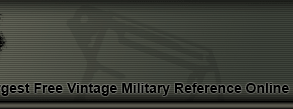WWII German Navy Officer's Dagger - First Model
The Kriegsmarine was the name of the German Navy between 1935 and 1945, during the Nazi regime, superseding the Reichsmarine, and the Kaiserliche Marine of World War I. The Kriegsmarine was one of three official branches of the Wehrmacht.
The officer corps of the German Navy has always been strong for tradition. Hitler's rise to power was no exception. This accounts for the reason why the Kriegsmarine was the last of the branches to adopt the Swastika on their daggers.
The German Navy had worn daggers dating back to 1842. During that period to World War Two the basic design of the dagger changed very little.

The design of the 1st model dagger consisted of flame ball pommel. A point is placed above the ball. A wavy pattern is
found at the botom of the ball. A white celluloid handle with gold wire wrapping. The crossguard displays the image
of an anchor. One side has a spring loaded button which releases the blade locking mechanism. the scabbard has two
brackets with suspension rings attached to them. It is decorated with a series of lines and patterns.

The blade is of stilleto style. About 50 percent of its length is Adorned with a series of etchings that includes
leafing and anchors. The dagger was manufactured by the Eickhorn company which is a well known manufacturer of
edge weapons during the Third Reich.
The manufacturer's logo, which consists of a squirrel holding a sword, is placed at the base of the blade, near
where the locking mechanism is found.

|
This page is a recognition and identification guide for German bayonets. Multiple
detailed photos of a specific sample are provided. Descriptions point out specific
points that should be noted.
One of the most commonly asked questions is "How much is my German bayonet worth?".
A price guide is included here to address this question. The value of the Nazi bayonets is
reviewed over a period of several years. A trend can be observed. The present worth
of the police sword in the collector's market is illustrated.
This service is provided free of charge to the visitor/enthusiast courtesy of
MilitaryItems.com,
a company dedicated
to the preservation of military history and to providing quality military antiques and
collectibles to museums, institutions and the general public.
|
|

The tip of the scabbard is pushed in. Instead of being rounded it is now flat. This was a common damage found
among all daggers. It is possible that it was caused by accidentally dropping the dagger on the ground.
Many German edge weapons are currently
reproduced.
It is becoming more difficult to be able to tell the fake ones from the real ones because
the quality of the reproductions is improving. The collector must become familiarized with
the construction style and materials employed in the manufacturing of this item.
Attention to the details is critical in order to be able to determine the authenticity of
the collectible.
If you have an interest is seeing other edge weapons of the Third Reich, you can do so by going
to our
WWII German daggers and Swords
identification guide, Where we cover blades from the Heer (Army), Navy (Kriegsmarine), Air Force
(Luftwaffe) and other organizations.
|







